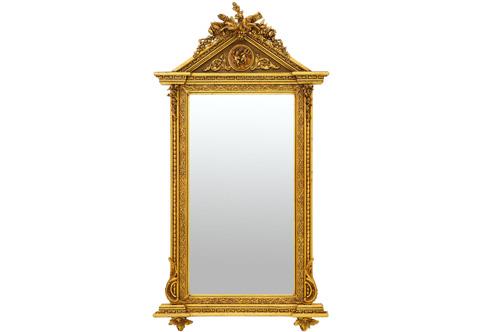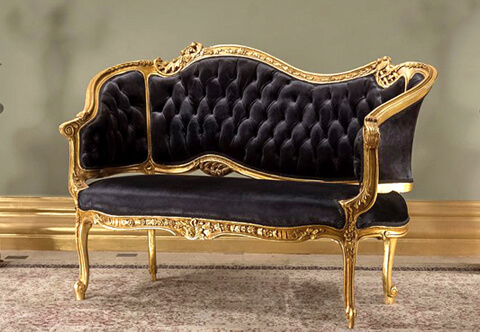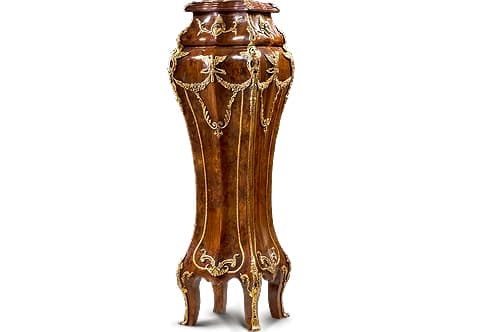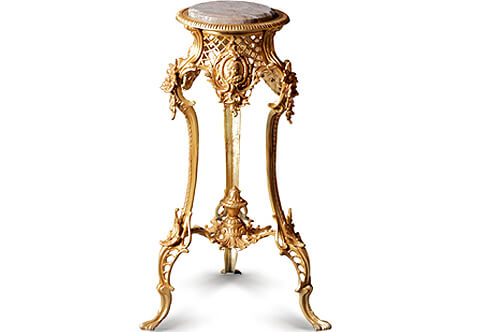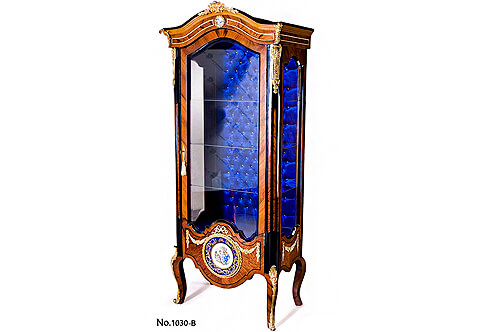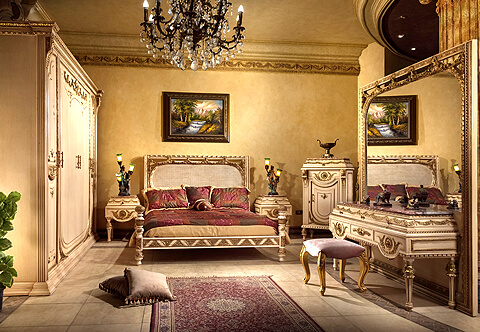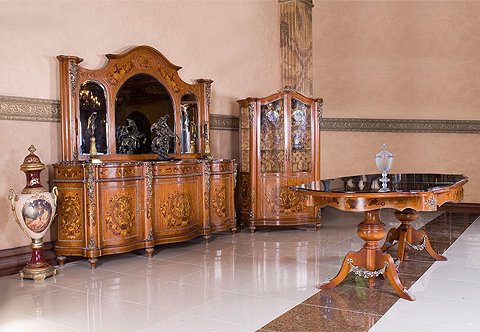French Régence Louis XV style Rocaille ormolu-mounted sans-traverse veneer inlaid Executive / Presidential Royal Grand Bureau Plat after the model by Charles Cressent and Léon Kahn
Ref#D-1535 | Description
An exceptional French late 19th century Régence Louis XV style Rocaille ormolu-mounted sans-traverse veneer inlaid three drawers Executive / Presidential Royal Grand Bureau Plat after the model by Léon Kahn based on the celebrated model designed by Charles Cressent;
The scalloped gilt-tooled leather-inset top within a scalloped ormolu moulded frame terminates with floral and rocaille-cast clasps to each corner. At the scalloped shaped frieze is a central recessed drawer flanked by foliate Rocaille C scroll-works and a drawer at each side. Each drawer is elaborately bordered with foliate scrolled ormolu mounts, ormolu keyhole escutcheons and foliate handles. The back is similarly decorated with the same design of the three faux drawers;
The presidential desk is raised on bold cabriole legs headed by superb and richly chased large figural maidens espagnolette chutes wearing a royal headdress over ringlet hair and issuing acanthus leaves, the legs are terminating in wrap around Rocaille style sabots of shell and acanthus leaves;
On central each side are exquisite and extremely finely chiseled ormolu mounts of female masks crowned with fine acanthus leave issuing scrollworks and sunrays chin, all amidst foliate patterns and ormolu frame;
The arbalest shaped veneer crossbanded leather topped surface is decorated with a leaf and dart on cyma recta ormolu gallery surrounding.
D-1535
H:93 x W:175 x D:80cm
Régence Louis XV Style | Charles Cressent | Léon Kahn
Charles Cressent:
Charles Cressent (1685-1767) is indisputably the most representative craftsman of the Régence period when fashion started to turn to furniture finished with relatively simple wood veneers, but fitted with ormolu mounts of increasing sculptural quality and splendour. In this arena Cressent stood alone, his early training as a sculptor being more than evident in the originality and quality of the mounts which he produced. He became master sculptor in 1719 and a member of the Academy of Saint-Luc. He is recorded as both sculpteur and ébéniste to the Duc d'Orléans, and he was constantly in difficulties with the guild of fondeurs and doreurs because, in contravention of the guild rules, he chased and gilded bronzes in his own workshop. In many instances he had even supplied models, which he had created himself, to the casters. His defense against this was that it enabled him to supervise the quality of the work and to prevent unauthorized copies being made; it has to be said that his defiance of the guild regulations has left a legacy of ormolu mounts of unparalleled distinction.
Léon Kahn:
Léon Kahn was a leading bronzier working in Paris in the last quarter of the 19th century. Little is known about the man or his oeuvre, but signed examples of his work are nearly always influenced by the great ébénistes of the eighteenth century, such as Benneman. His mounts are always of the very highest quality with exceptional casting and chiseling.


.jpg)
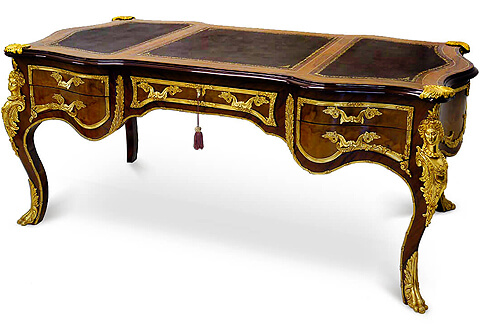
.jpg)
